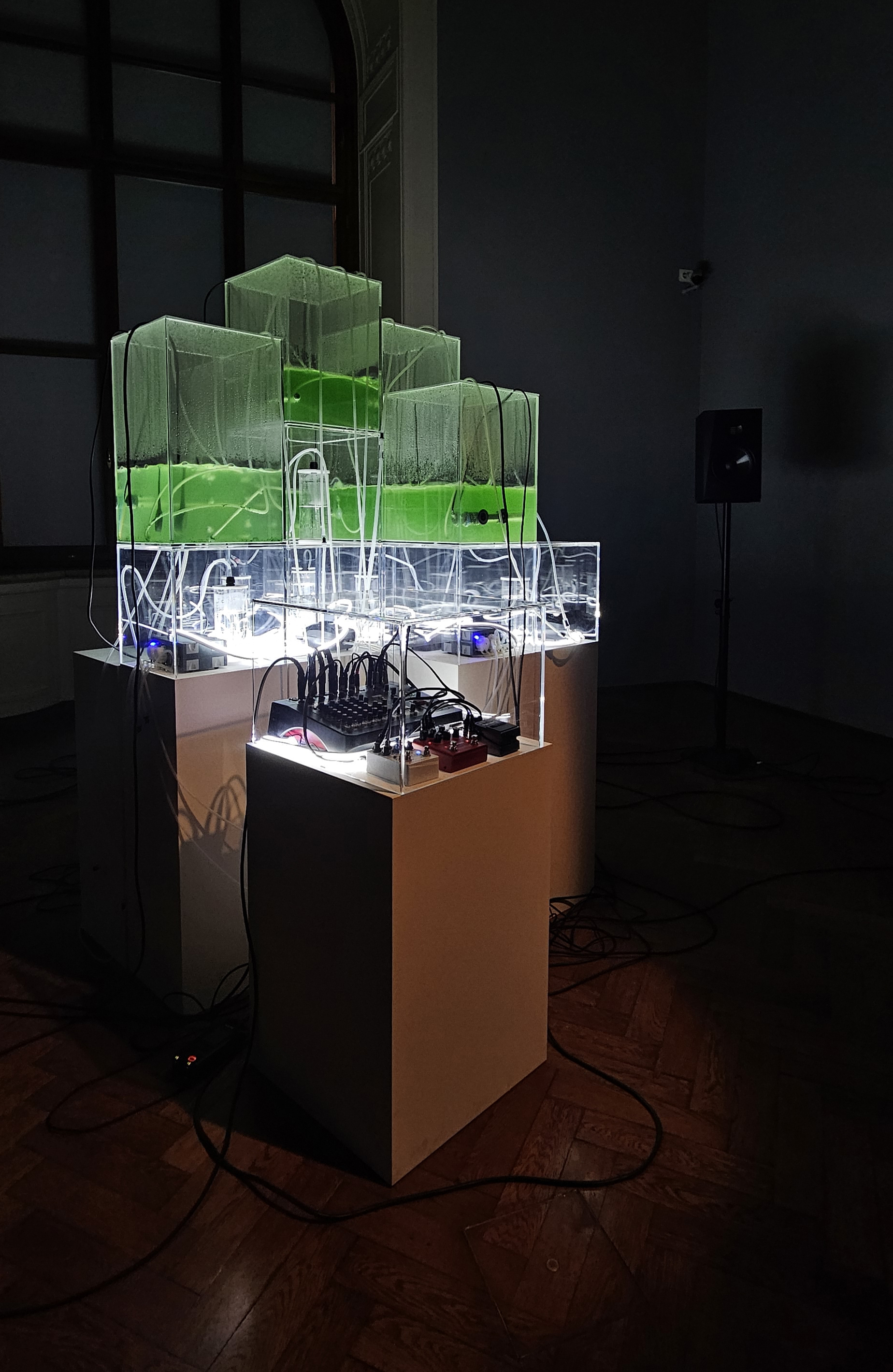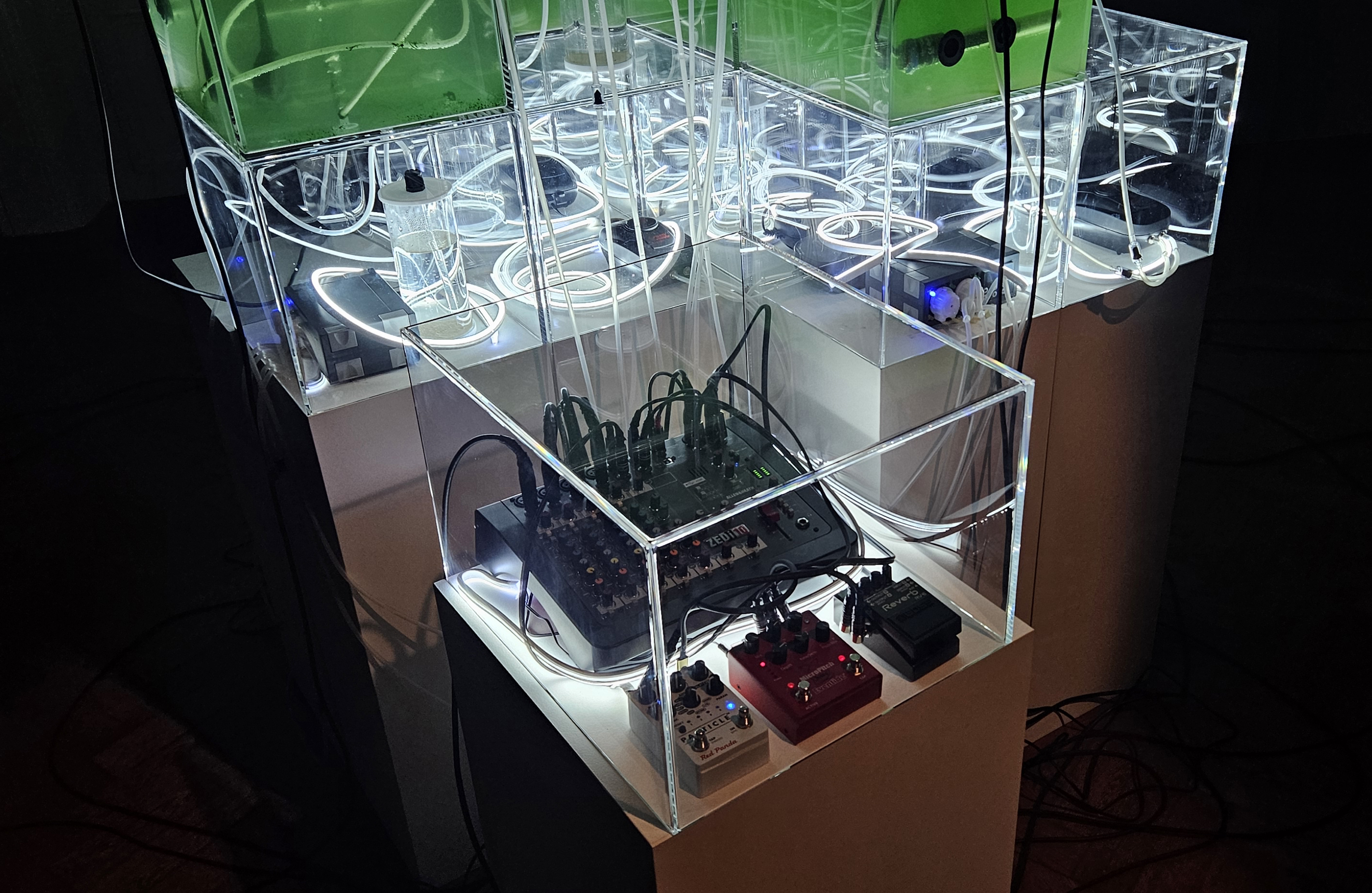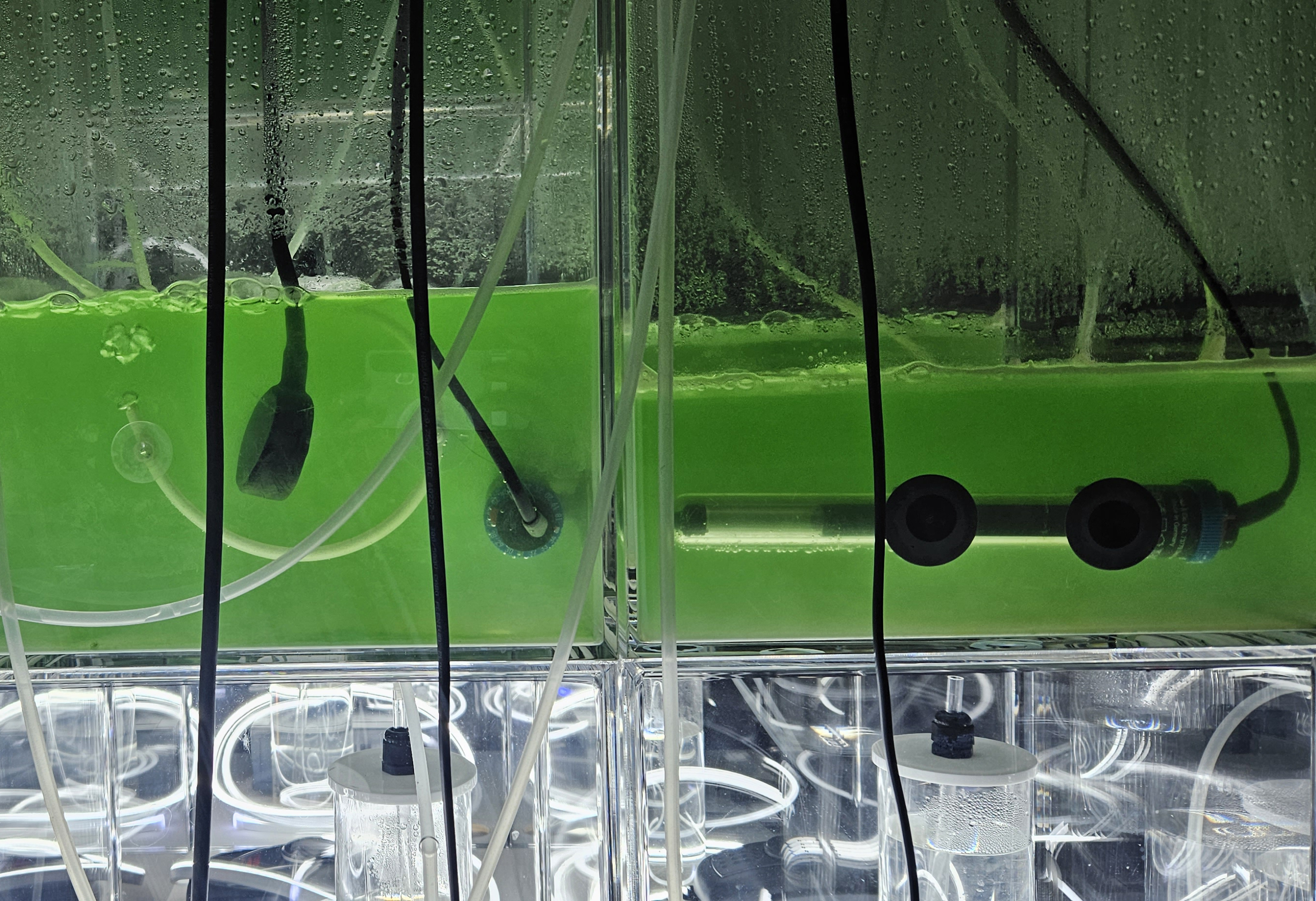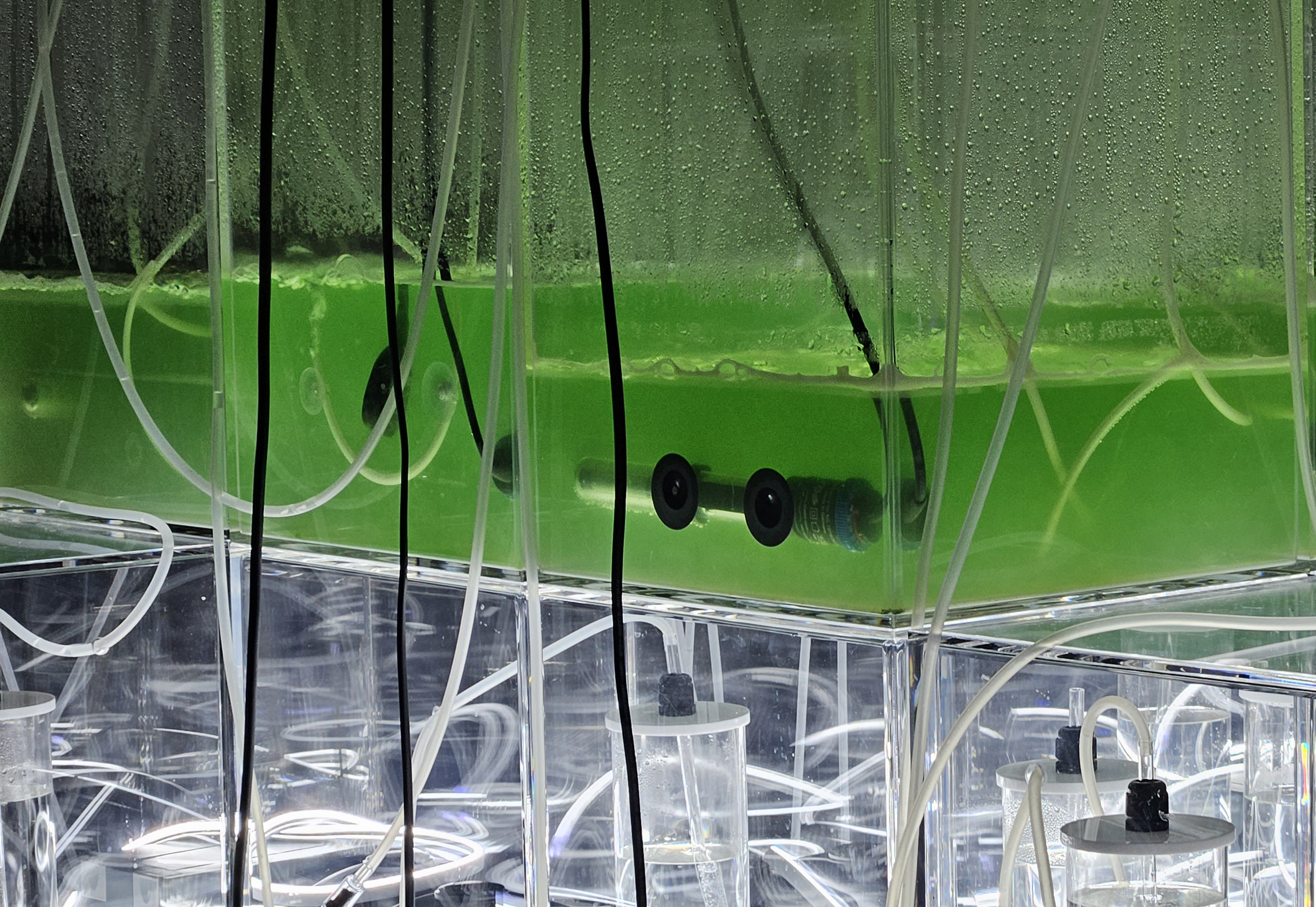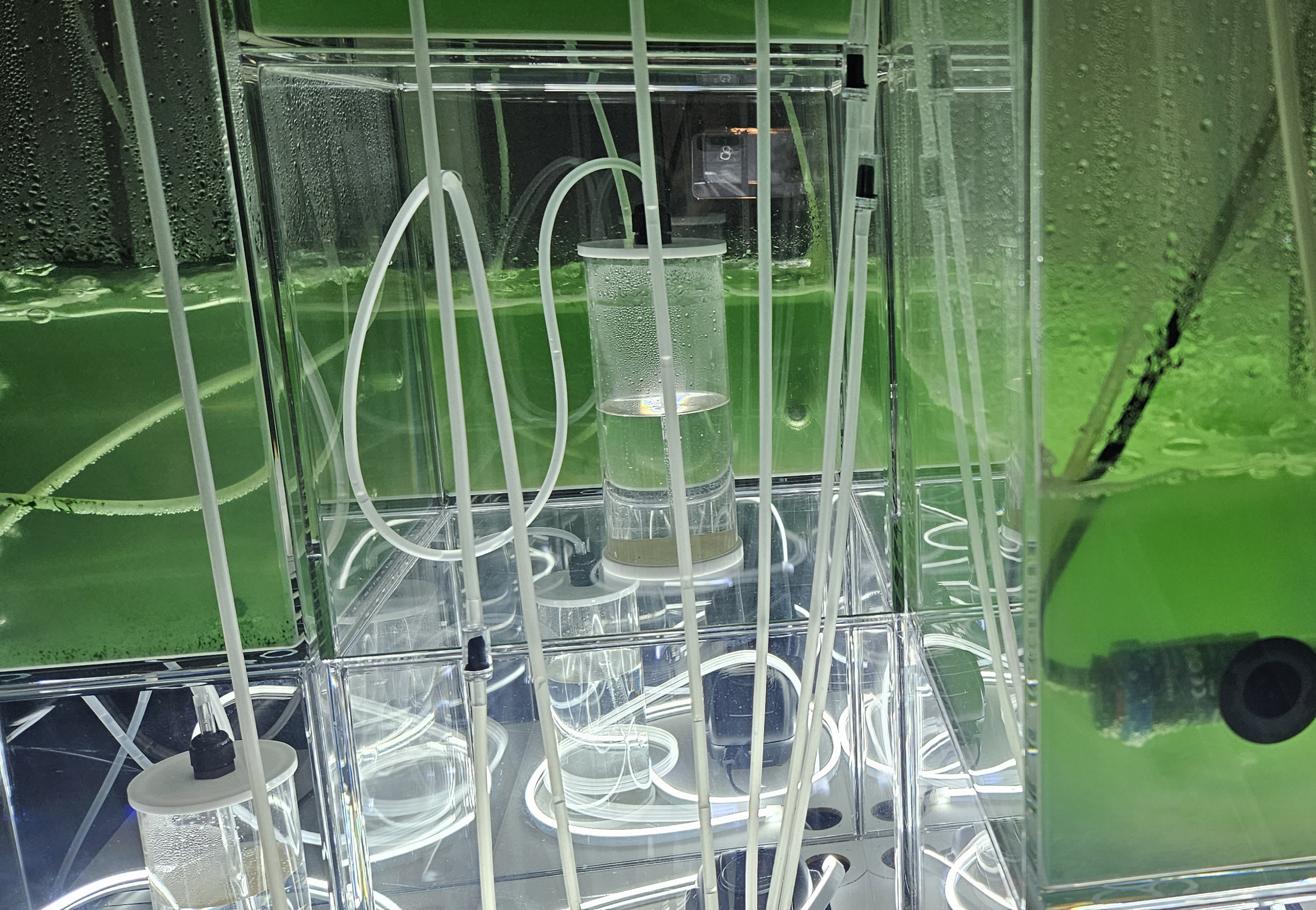Tecuitlatl. An algae sound installation
©Fara Peluso - 2023
In research collaboration with Maria Antonia González Valerio
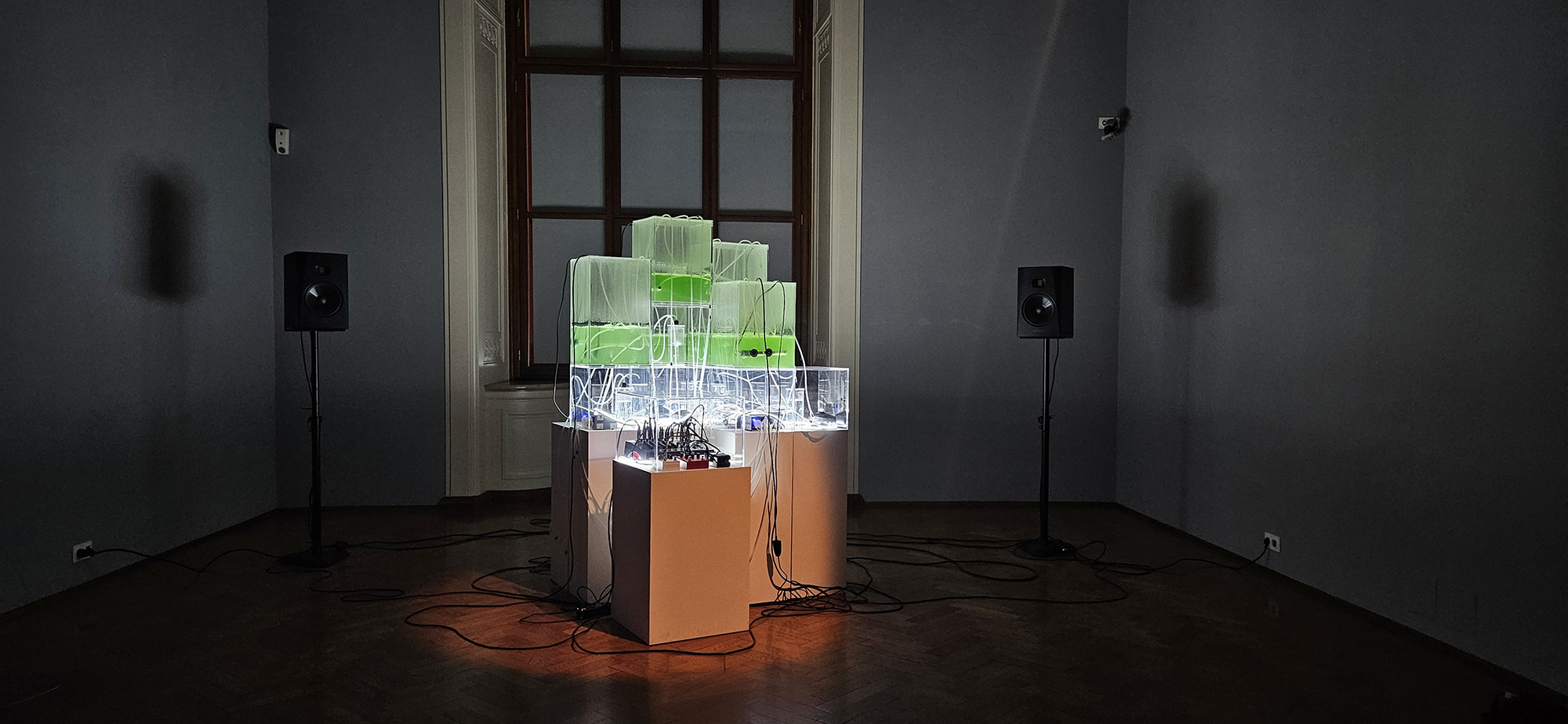
Tecuitlatl is a trans-disciplinary algae installation which aims to dwell on the topic of climate change by focusing on micro organisms, with an emphasis on drawing attention on the colonisation of ancient algae harvesting practice of the Mexicans. This work is in research collaboration between the bio artist Fara Peluso and the philosopher Maria Antonia González Valerio from Mexico City director of the organisation Art+Science. The project was previously developed with the support of the sound artist Hüma Utku with the aim to create an alternative narrative dictated by the algae organisms about how human beings’ activities have devastated and exploited the natural environments.
How could the living machines influence our lives and change the way see the world? Could a different relationship with micro organisms contribute to find solutions for climate change? How art, science and new technologies can help to build a collective memory about the drastic changes of natural landscapes and its legacy for the future? The trans-disciplinary work Tecuitlatl is an algae installation which aims to dwell on these questions with the Spirulina micro algae employed as central subject telling a different story. What would be their perspective about the Anthropocene, their existence from the time of Tecnochtitlàn (the present Mexico City) until now – a time of the Algae bloom climate change phenomena. Also known as eutrophication, this phenomena is an alteration process affecting the water ecosystems due to increased presence of chemical wastes from industrial and farming activities. Through a biological reaction, the algae transform the water into a cyanobacteria population, requiring high amounts of oxygen, turning it to colour green, creating a toxic environment that is also fatal to the animals.
Tecuitlatl is the result of a research collaboration with the philosopher and director of Art+Science in Mexico City Maria Antonia González Valerio, previously developed with the support of the sound composer Hüma Utku. The work wants to propose an alternative narrative dictated by the algae organisms about how human beings’ activities have devastated the natural environments trying to analyse an historical and economical implications dates back to the 1500s during the Spaniards conquest of Mexico. It dates back to the 1500s, the Spaniards conquest of Mexico, when it was documented in writing for the first time that there was a new harvesting process of a green slimy substance from the lakes and this technique were used to prepare some green cheesy bread. The Mexicans apparently had a nose for superfoods, before the arrival of the Spaniards, they were happily consuming amaranth and chia, both of which have only recently been rediscovered and made available commercially.
They had a third superfood that is also making a comeback, which is today called Spirulina and, according to the United States National Institute of Health, it ‘became famous’ after it was successfully used by NASA as a dietary supplement for astronauts on space missions. Spirulina was a food source for the Aztecs and other Mesoamericans until the 16th century which, extracted from Lake Texcoco in Mexico and subsequent sale as cakes, were described by one of Cortés’ soldiers. The Aztecs called it tecuitlatl. In the 1960’s French researchers found an abundance of Spirulina from Lake Texcoco but no references to its use by the Aztecs as daily food source was made after the 16th century, probably because of the draining of the surrounding lakes for agriculture and urban development.
Today algae are also featured in Western food markets, attracting the attention of companies and the public which are proclaiming them ‘the super food of the future’. Yet considering how we are behaving today towards algae organisms, some contradictions caused by industrial and farming activities can be noticed. Their speculative capitalistic (capitalization) goals are far from taking into account the history of an ancient practice. This results in economic exploitation, mistreating the natural environmental balance. Due a massive industrialization and farming activities today we are facing environmental disasters involving water ecosystems, places where micro algae are calling our attention through the so called eutrophication process, a harmful phenomena which is causing the death of many aquatic life forms.
The goal of Tecuitlatl installation is to build a connection with these micro organisms offering a channel where a voice will become the symbol of past and present human actions and exploitations. The work has been developed combining experiments from DIY biology practice of algae cultivation, through a historical research on the colonisation of algae traditions of Mexicans and exploration of possible sound detections from the algae culture through field recordings. The sonic efforts concentrates on sound recordings fo the algae tanks as well as field recordings from the inland bodies of water. These sounds were assembled in a meaningful body of work successively. The sound installation will remind the whole story, from ancient to contemporary practices, where the algae placed in water culture will be able to speak and create their narrative. A voice will rise a call of salvation from dark and deep places asking to think about how human beings created the Anthropocene, through exploitation and expeditions from the past, through the massive production activities from the contemporary time, which is the main cause of many climate change phenomena.
